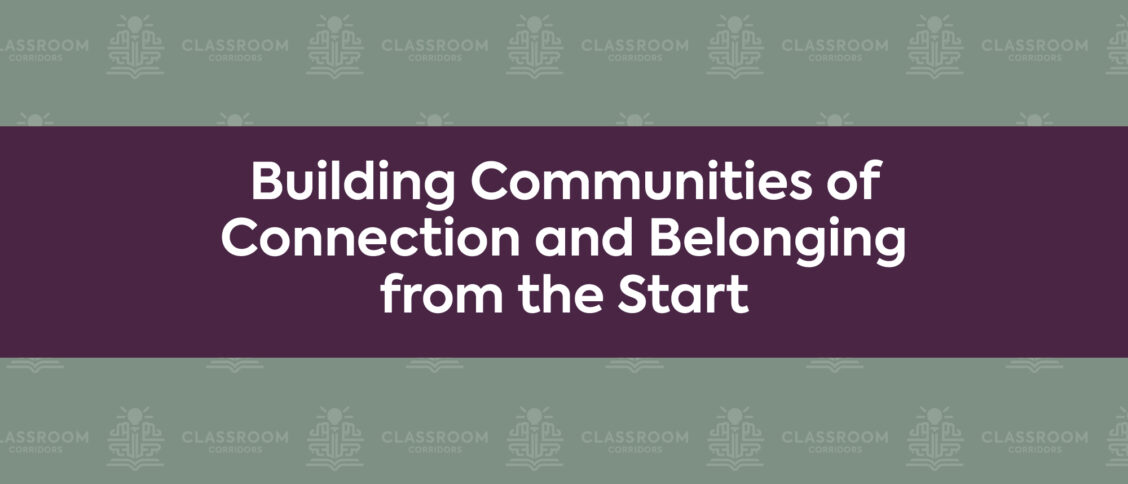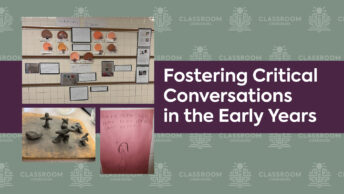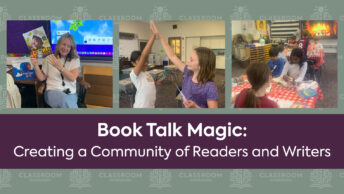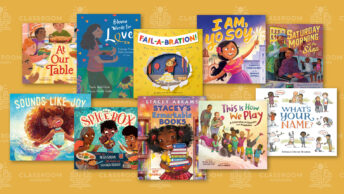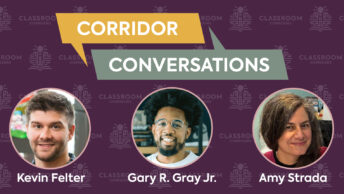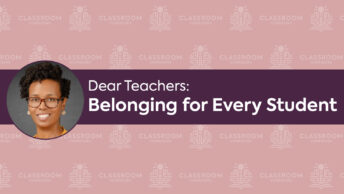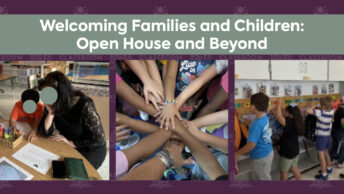Building Community
There is something really magical about the beginning of a new school year. When I return each year to an open room, it feels like this blank canvas of possibilities. New children, new families, so much potential. And while community is something I believe that we build continuously throughout the year, the start of the year holds a unique opportunity for the community to form its foundation.
I believe deeply in the power of child-centered learning. When kids are involved in co-constructing the classroom environment, the class rules, and countless other decisions, they become more invested and engaged. Think about the different communities you are a part of. When your voice is valued and included, how does that influence your sense of belonging? To help keep this vision at the forefront during the often chaotic launch of the school year, I keep these two guiding questions close by: How can I nurture a child-centered community? How can the connections and belonging that are pillars of communities be collaboratively built?
Connecting Before the Year Begins
We can start to nurture these connections before our students walk through the door on the first day. Calling families, going on Welcome Walks where you visit families in their neighborhoods, and events like Open House all provide opportunities to set the tone for what belonging feels like in the class community. Here are a few beginning-of-the-year activities that provide opportunities for us, teachers and school personnel, to start building community with kids at the center.
Welcome Walks and Home Visits – Welcome Walks are opportunities for teachers to visit children and families in their neighborhoods. These are brief visits to students’ homes that provide opportunities for teachers to connect in the child’s home space and bridge the connection to school. While these are opportunities to share information about upcoming events, like personally inviting families to Open House, they also serve as moments to learn more about children and families. This is a great time to find out about students’ interests, meet family pets (always a kid favorite), and take a family picture, if families are comfortable with this, to hang in our classroom. While it can be a quick turnaround depending on when your Open House is, I love to head back to school after these events and print the family pictures out to hang on our walls, and pull out some books or toys that the child shared they’re interested in. This way, when they walk into the classroom, they already feel like they are seen and belong in this community.
Classroom Space – Speaking of the classroom, there is often immense pressure for teachers to have their classrooms fully decorated and ready to go before students walk in. And yet, if we believe that community is co-constructed, don’t we want the kids to be a part of setting up this space?
As you start to arrange the classroom environment, consider how you might set up the classroom walls and areas to convey that this space is malleable and waiting for kids’ input. For me, this meant shifting my discomfort with the room feeling a bit sterile and reframing it as a blank canvas for us to make decisions about and create together. A mantra I tell myself is to “keep the classroom the class’s room.” When you begin to set up your classroom, you might consider these questions: What might we need to co-construct and create together? What materials will we need to do this work?
Open House – Open House is often the first time students and families enter the classroom space. I try to be intentional about not overloading families with information and avoid slipping into the dynamic of teachers as information holders and kids and families as information receivers. It can be helpful to limit paperwork to only essential information (like how kids get home) to free up time for families to share things like what their hopes are for our classroom community this year, what is important to their family, and anything they want to share about their child. In these moments, my goal is to convey to students and families that this space belongs to all of us and their voices are essential parts of our community. Some ways we can do this are by:
- Posing questions around the room for kids and families to interact with, such as “What does community mean to you?” or “What are your hopes for this school year?”
- Having kids and families create and decorate resources for the room together, such as name tags or signs
- Ensuring any forms or signs are available in all families’ languages and welcoming responses in any language
Curating Your Read-Aloud Stack – I’m a planner at heart, and the downtime of not over-decorating and creating things without the kids can definitely make me a smidge restless. One thing I find helpful is to start gathering read-alouds I think will provoke rich conversation with the kids about community. These conversations can serve as the springboard for when we write our classroom promises and start to create our classroom routines together. Books about identity, communities, and belonging are all great places to start!
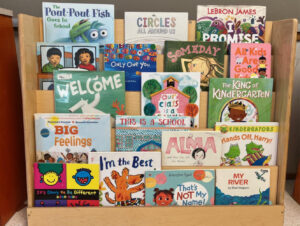
Building Community All Year Long
These are all ideas for building community with connection and belonging at the heart before kids walk through the door on the first day. While the waves of testing and curriculum will come crashing in quickly, I encourage you to stay steadily grounded in keeping kids at the center. Community building is something that requires nourishing throughout the year and something that is worthy of the time.

